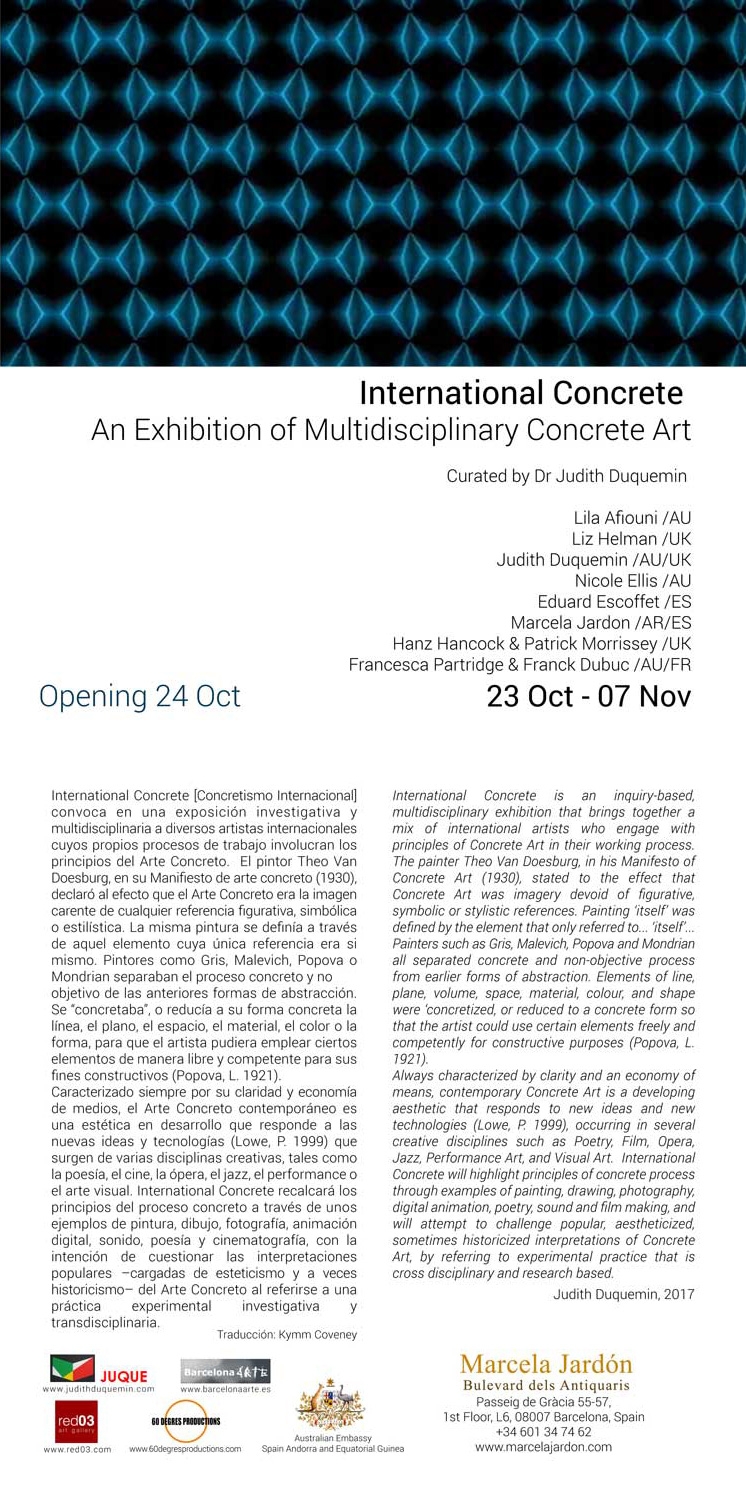International Concrete [Concretismo Internacional] convoca en una exposición investigativa y multidisciplinaria a diversos artistas internacionales cuyos propios procesos de trabajo involucran los principios del Arte Concreto. El pintor Theo Van Doesburg, en su Manifiesto de arte concreto (1930), declaró al efecto que el Arte Concreto era la imagen carente de cualquier referencia figurativa, simbólica o estilística. La misma pintura se definía a través de aquel elemento cuya única referencia era si mismo. Pintores como Gris, Malevich, Popova o Mondrian separaban el proceso concreto y no objetivo de las anteriores formas de abstracción. Se ?concretaba?, o reducía a su forma concreta la línea, el plano, el espacio, el material, el color o la forma, para que el artista pudiera emplear ciertos elementos de manera libre y competente para sus fines constructivos (Popova, L. 1921). Caracterizado siempre por su claridad y economía de medios, el Arte Concreto contemporáneo es una estética en desarrollo que responde a las nuevas ideas y tecnologías (Lowe, P. 1999) que surgen de varias disciplinas creativas, tales como la poesía, el cine, la ópera, el jazz, el performance o el arte visual. International Concrete recalcará los principios del proceso concreto a través de unos ejemplos de pintura, dibujo, fotografía, animación digital, poesía y cinematografía, con la intención de cuestionar las interpretaciones populares ? cargadas de esteticismo y a veces historicismo ? del Arte Concreto al referirse a una práctica experimental investigativa y transdisciplinaria. International Concrete is an inquiry based, multidisciplinary exhibition that brings together a mix of international artists who engage with principles of Concrete Art in their working process. Painter, Theo Van Doesburg, in his Manifesto of Concrete Art (1930), stated to the effect that Concrete Art was imagery devoid of figurative, symbolic or stylistic references. Painting ?itself? was defined by the element that only referred to... ?itself?. Painters such as Gris, Malevich, Popova and Mondrian all separated concrete and non-objective process from earlier forms of abstraction. Elements of line, plane, volume, space, material, colour, and shape were ?concretized, or reduced to a concrete form so that the artist could use certain elements freely and competently for constructive purposes (Popova, L. 1921). Always characterized by clarity and an economy of means, contemporary Concrete Art is a developing aesthetic that responds to new ideas and new technologies (Lowe, P. 1999), occurring in several creative disciplines such as Poetry, Film, Opera, Jazz, Performance Art, and Visual Art. International Concrete will highlight principles of concrete process through examples of painting, drawing, photography, digital animation, poetry and film making, and will attempt to challenge popular, aestheticized, sometimes historicized interpretations of Concrete Art, by referring to experimental practice that is cross disciplinary and research based.




